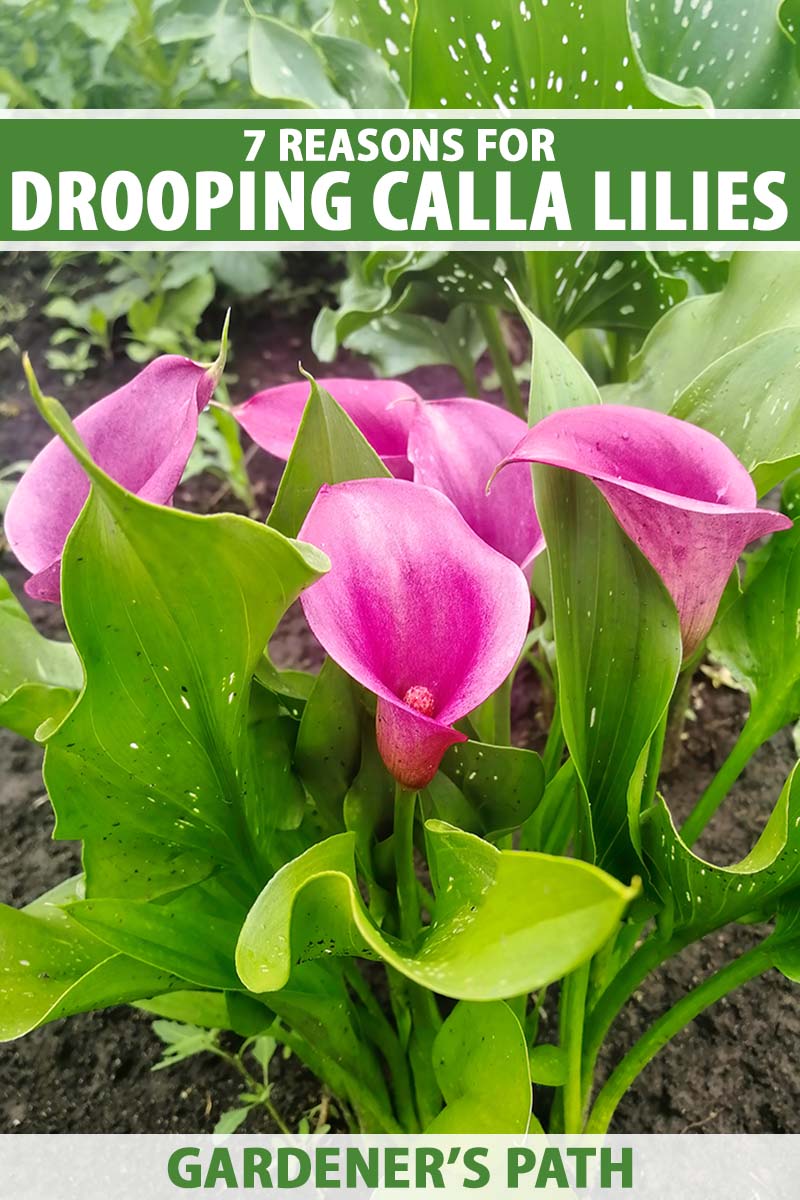Lilies are one of the most popular flowers in the world. They’re beautiful, they smell great, and they make a wonderful addition to any garden. However, lilies have a tendency to flop over.
This can be frustrating for gardeners, as it can ruin the look of a perfect flower bed. There are a few reasons why lilies might flop over, and fortunately, there are also a few solutions.
The most common reason for lilies flopping over is that they’re not getting enough support.
Lilies have relatively weak stems, so they need something to lean on. If you’re growing lilies in a pot, make sure to use a stake or trellis to support the plant. If you’re planting them in the ground, try adding some rocks or stones around the base of the plant to keep it upright.
Another reason for floppy lilies is that they’re not getting enough water. Lilies need quite a bit of water, so make sure to water them regularly (especially during hot summer months). Also, be sure to fertilize your plants regularly.
A lack of nutrients can also cause weak stems and floppy leaves.
Lilies are a beautiful flower that many people enjoy having in their gardens. However, one downside to lilies is that they have a tendency to flop over. This can be frustrating for gardeners who want their lilies to stand up tall and proud.
So, why do lilies flop over?
There are a few reasons why lilies may flop over. One reason is that the stems of the lily plant are not strong enough to support the weight of the flower head.
Another reason is that the soil around the lily plant may be too loose, causing the plant to fall over. Additionally, if there is too much water in the soil, it can cause the plant to become top-heavy and topple over.
There are a few things that you can do to help prevent your lilies from flopping over.
First, make sure that you choose a variety of lily that is known for having strong stems. Second, when planting your lily bulbs, make sure to firm up the soil around them so that they have something sturdy to hold onto. Finally, water your plants regularly but be careful not to overwater them as this can lead to problems as well.
How to deadhead your lilies
Calla Lily Leaves But No Flowers
If you have a calla lily plant that is not flowering, don’t despair! There are several possible reasons why your plant may not be blooming. One reason could be that the plant is not getting enough sunlight.
Calla lilies need at least six hours of sunlight each day in order to bloom. Another reason could be that the plant is not getting enough water. Make sure to water your calla lily plant regularly, and keep the soil moist but not soggy.
If you think your plant is getting enough sun and water but still isn’t flowering, it might be because it’s too cold. Calla lilies prefer warm temperatures, so if it’s been particularly chilly where you live, that could be why your plant isn’t blooming. Finally, some varieties of calla lily take longer to flower than others.
So if you’ve only had your plant for a short time, it may just need some more time to mature before it blooms.
Why are My Lilies Drooping in Vase
If you’ve noticed your lilies drooping in vase, there are a few possible reasons why. First, it could be that the water isn’t fresh. Lilies are very sensitive to bacteria, so it’s important to change the water every day.
Also, make sure to use a clean vase and cut the stems at an angle before putting them in water.
Another possibility is that the temperature is too warm. Lilies like cool temperatures, so if your room is particularly warm, try moving the vase to a cooler spot.
Finally, it could simply be that the lilies are past their prime and starting to wilt naturally. If this is the case, there’s not much you can do except enjoy them while they last!
How Do I Keep My Lilies from Falling Over
If you’re like most lily lovers, you’ve probably had your fair share of struggles keeping your lilies upright. Whether they’re in a pot or in the ground, it seems like they’re constantly falling over! So what can you do to keep your lilies from toppling over?
First, make sure that you’re planting them in well-drained soil. Lilies don’t like to sit in wet, soggy soils for long periods of time. If your soil is too heavy or clay-like, consider mixing in some sand to help with drainage.
Secondly, be sure to stake your lilies when they’re first planted. This will help support the stems as they grow taller and prevent them from falling over later on. You can use bamboo stakes or metal stakes – just be sure to drive them into the ground deep enough so that they won’t fall over easily.
Lastly, don’t forget to deadhead spent flowers regularly. As the flowers start to fade and die back, their weight can cause the stems to bend and eventually break. By removing these spent flowers regularly, you’ll help keep your lilies looking neat and tidy while also preventing stem breakage.
When to Cut Back Calla Lilies in the Fall
When to Cut Back Calla Lilies in the Fall
As the fall season approaches, many gardeners begin to think about cutting back their calla lilies. There are a few things to consider when making this decision, such as the plant’s age, health, and location.
If you have young calla lilies, it’s best to wait until they are at least 2-3 years old before cutting them back. This will give them time to establish themselves and produce strong roots. Once they reach this point, you can cut them back by about half their height.
Older calla lilies can be cut back more severely, as they are less likely to suffer from transplant shock. If your plant is healthy and vigorous, you can cut it back by up to two-thirds its height. However, if it is looking weak or sickly, it’s best to only remove a third of the growth.
The location of your calla lily also plays a role in how much you should trim it back. Plants that are grown in containers can be trimmed more severely than those that are planted in the ground since they will not have as much root mass to support new growth. Ground-planted calla lilies should only have about one-third of their growth removed each year.

Credit: gardenerspath.com
How Do You Keep Lilies from Falling Over?
Lilies are a beautiful and popular flower, but they can be a bit finicky. One common issue is that they have a tendency to fall over. There are a few things you can do to help prevent this from happening.
First, make sure you’re planting your lily in well-drained soil. If the soil is too wet or soggy, it can cause the lily’s roots to rot, which will make the plant top-heavy and more likely to topple over.
Second, give your lily plenty of support.
You can do this by staking it with bamboo or metal stakes, or by planting it next to other tall plants that will provide some support (just make sure the other plants aren’t too close so that they don’t crowd out the lily).
Finally, keep an eye on your lily and if you see it starting to lean over, gently tie it up with some soft twine or ribbon. This will help hold it upright until its roots have a chance to take hold and anchor it in place.
With a little care and attention, you can enjoy these lovely flowers without worry about them toppling over!
Why are My Lilies Bending Over?
Lilies are a beautiful addition to any garden, but sometimes they can start to bend over. This is usually due to one of two things – either they’re not getting enough sunlight, or they’re getting too much water.
If your lilies are in a spot that doesn’t get a lot of sun, they may start to lean towards the light in an effort to get more of it.
If this is the case, try moving them to a sunnier spot. They should perk up within a few days.
Too much water can also cause lilies to bend over.
If the soil is constantly wet, the roots will start to rot and the plant will become unstable. Make sure you’re only watering when the soil is dry – and be careful not to overwater!
Are the Reasons for Day Lilies and Lilies Flopping Over the Same?
Are the reasons why day lilies prone to flopping over the same as those for lilies? While both types of flowers may experience flopping, the causes can vary. Day lilies tend to flop due to weak stems or overcrowded growth, while lilies may flop due to tall flower stems or inadequate support. Understanding the specific reasons behind flopping can help in addressing and preventing this issue for each type of flower.
Will a Bridge Over a Pool Help Support my Flopping Water Lillies?
A bridge over a pool allows for added elegance to your outdoor space while offering functional benefits. However, when it comes to supporting water lilies, it may not directly impact their flopping. To prevent this, consider using floating supports or adjusting the water level. Nonetheless, a bridge over pool water lilies can contribute to an aesthetically pleasing landscape.
Why is My Lily Plant Drooping?
If your lily plant is drooping, it could be due to a number of reasons. It could be that the plant is not getting enough water, or that the soil is too dry. It could also be that the plant is not getting enough light.
If the plant is in a pot, it could be that the roots are crowded and need to be transplanted into a larger pot.
If you think that your lily plant is drooping because it needs more water, make sure to check the soil before watering. The soil should be moist but not soggy.
If the soil is dry, water the plant until the soil is saturated and then let the excess water drain away. If you think that your lily plant needs more light, move it to a brighter location.
Conclusion
Lilies are a beautiful addition to any garden, but they can be a bit of a pain when it comes to keeping them upright. The main reason lilies flop over is because they are top-heavy. The weight of the blooms can cause the stems to bend, and eventually the flowers will end up touching the ground.
There are a few things you can do to prevent your lilies from flopping over. First, make sure to plant them in an area that gets plenty of sun. This will help them grow strong stems that are less likely to bend.
You can also stake your lilies, or tie them up with string or wire so they have something to lean on. Lastly, deadhead your lilies regularly (removing spent blooms) so they don’t get too heavy and fall over.






